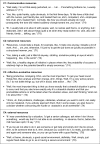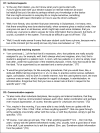Perceived stress at transition to workplace: a qualitative interview study exploring final-year medical students' needs
- PMID: 26834503
- PMCID: PMC4716753
- DOI: 10.2147/AMEP.S94105
Perceived stress at transition to workplace: a qualitative interview study exploring final-year medical students' needs
Abstract
Objectives: This study was designed to explore final-year medical students' stressors and coping strategies at the transition to the clinical workplace.
Methods: In this qualitative study, semi-standardized interviews with eight final-year medical students (five male, three female; aged 25.9±1.4 years) were conducted during their internal medicine rotation. After verbatim transcription, a qualitative content analysis of students' impressions of stress provoking and easing factors during final-year education was performed.
Results: Students' statements regarding burdens and dealing with stress were classified into four main categories: A) perceived stressors and provoking factors, B) stress-induced consequences, C) personal and external resources for preventing and dealing with stress, and D) final-year students' suggestions for workplace improvement.
Conclusion: Final-year medical students perceived different types of stress during their transition to medical wards, and reported both negative consequences and coping resources concerning perceived stress. As supervision, feedback, and coping strategies played an important role in the students' perception of stress, final-year medical education curricula development should focus on these specifically.
Keywords: final-year medical education; qualitative research; stress prevention; undergraduate medical education; workplace learning.
Figures





References
-
- Dyrbye LN, West CP, Satele D, et al. Burnout among US medical students, residents, and early career physicians relative to the general US population. Acad Med. 2014;89(3):443–451. - PubMed
-
- Walkiewicz M, Sowińska K, Tartas M. Burnout in medical profession – a literature review. Przegl Lek. 2014;71(5):263–269. Polish. - PubMed
-
- Prins JT, van der Heijden FM, Hoekstra-Weebers JE, et al. Burnout, engagement and resident physicians’ self-reported errors. Psychol Health Med. 2009;14(6):654–666. - PubMed
LinkOut - more resources
Full Text Sources
Other Literature Sources
Research Materials

